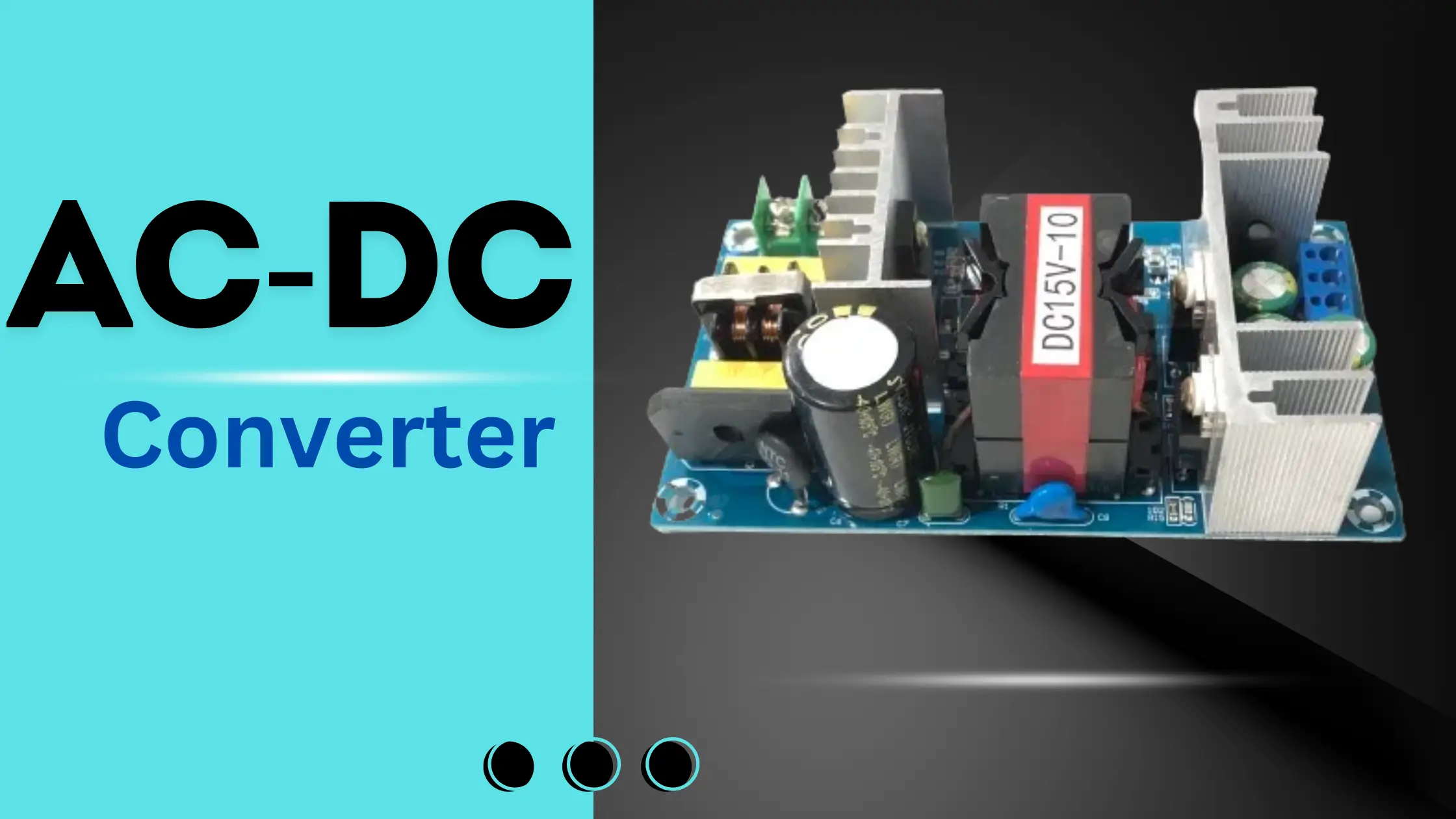AC to DC Converters: How it works?

In today’s technology-driven world, the seamless operation of electronic devices and systems relies heavily on the efficient conversion of electrical power. One critical component in this process is the AC to DC converter, a device that transforms alternating current (AC) into direct current (DC). This blog post will explore what AC to DC converters are, how they work, their types, and their applications.
What is an AC to DC Converter?
An AC to DC converter, often referred to as a rectifier, is an electronic device used to convert AC, which periodically reverses direction, to DC, which flows in only one direction. This conversion is essential for powering most electronic devices, which require a stable and constant DC voltage.
How Does an AC to DC Converter Work?
The process of converting AC to DC involves several steps:
- Rectification: The primary function of the converter is rectification, which is the conversion of AC to pulsating DC. This is typically achieved using diodes, which allow current to flow in only one direction.
- Filtering: After rectification, the output is a pulsating DC voltage, which is not suitable for most applications. Therefore, a filtering process is needed to smooth out the fluctuations. Capacitors are commonly used to filter the output.
- Regulation: To ensure a stable DC output, voltage regulators are used. These components maintain a constant output voltage regardless of variations in input voltage or load conditions.
Types of AC to DC Converters
There are several types of AC to DC converters, each with its specific characteristics and applications:
- Uncontrolled Rectifiers: These use diodes and provide a fixed output based on the AC input. They are simple and cost-effective but lack control over the output voltage.
- Half-Wave Rectifier: Uses a single diode and converts only one half of the AC cycle into DC. It’s simple but inefficient.
- Full-Wave Rectifier: Uses multiple diodes to convert both halves of the AC cycle into DC, offering better efficiency and performance.
- Controlled Rectifiers: These use thyristors or silicon-controlled rectifiers (SCRs) to provide control over the output voltage by adjusting the phase angle of the AC input.
- Single-Phase Controlled Rectifier: Suitable for low-power applications.
- Three-Phase Controlled Rectifier: Used in high-power industrial applications.
- Bridge Rectifiers: A type of full-wave rectifier that uses four diodes arranged in a bridge configuration to provide full-wave rectification with higher efficiency and reduced ripple voltage.
Applications of AC to DC Converters
AC to DC converters are widely used in various applications, including:
- Power Supplies for Electronic Devices: Most electronic gadgets, including computers, televisions, and smartphones, require DC power to operate. AC to DC converters are used in power adapters and chargers to provide the necessary DC voltage.
- Industrial Equipment: Many industrial machines and control systems operate on DC power, making converters essential in industrial settings.
- Renewable Energy Systems: Solar panels and wind turbines generate DC power, which needs to be converted to AC for grid integration or use with AC appliances. However, for certain DC applications, AC to DC converters are used in combination with inverters.
- Automotive Applications: Modern vehicles, especially electric and hybrid cars, use AC to DC converters to manage power from the alternator and distribute it to various electronic systems.
Conclusion
AC to DC converters play a pivotal role in our electrical and electronic systems, enabling the smooth operation of countless devices and applications. Understanding how these converters work and their different types helps in selecting the right converter for specific needs, ensuring efficiency and reliability in power management. Whether in consumer electronics, industrial machinery, or renewable energy systems, AC to DC converters are indispensable components in the modern technological landscape.